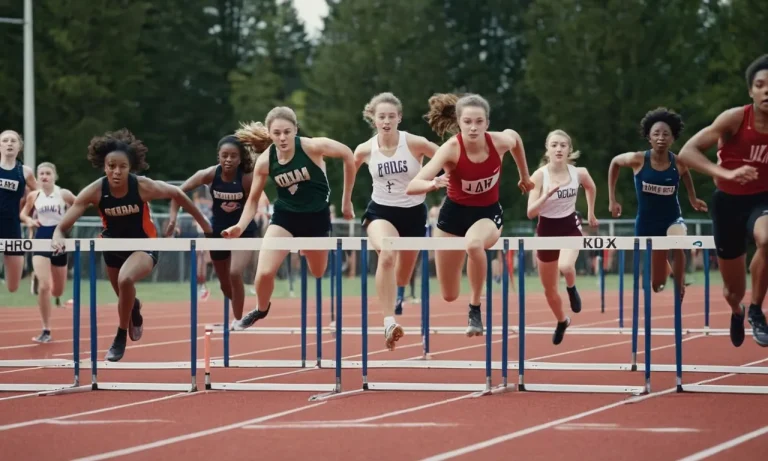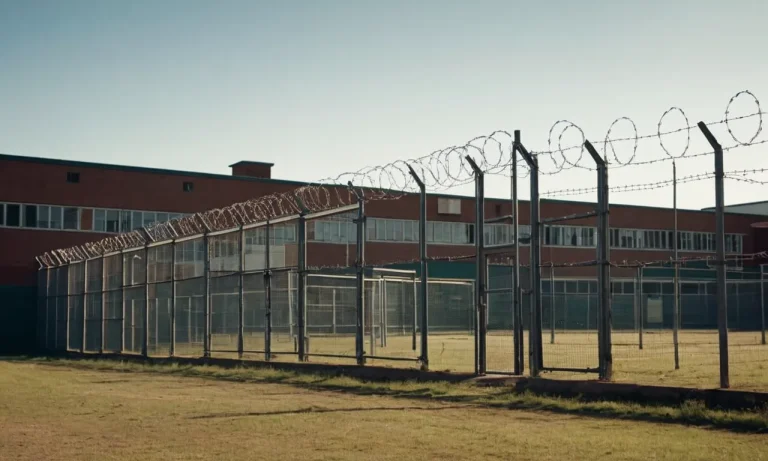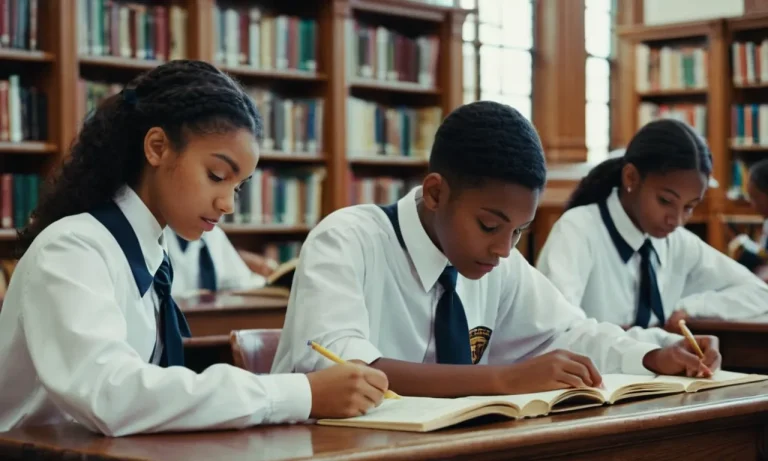Choosing the right educational path for your child is a crucial decision that can shape their future. As parents, you want to ensure that your child receives the best possible education, but navigating the complexities of prep schools and high schools can be daunting.
If you’re short on time, here’s a quick answer to your question: Prep schools and high schools differ in their approach to education, curriculum, resources, and overall environment. Prep schools typically offer a more rigorous academic program, smaller class sizes, and a greater emphasis on extracurricular activities and college preparation, while high schools provide a more diverse and inclusive environment with a broader range of academic and extracurricular options.
In this comprehensive article, we will delve into the key differences between prep schools and high schools, exploring their academic offerings, extracurricular activities, college preparation, and overall learning environments.
By understanding these distinctions, you can make an informed decision that aligns with your child’s needs and aspirations.
Academic Rigor and Curriculum
When it comes to education, the curriculum and academic rigor can make a significant difference in shaping a student’s future. Both prep schools and high schools offer academic programs, but there are notable distinctions that set them apart.
Let’s delve into the nuances of their curricula, class sizes, and student-teacher ratios.
Prep School Curriculum
Prep schools, also known as independent or private schools, are renowned for their rigorous academic programs. They often follow a college-preparatory curriculum, focusing on equipping students with the knowledge and skills necessary for success in higher education.
Prep schools typically offer a wide range of advanced courses, including Advanced Placement (AP) and International Baccalaureate (IB) programs, which provide opportunities for students to earn college credits while still in high school.
Additionally, prep schools may offer specialized programs in areas like arts, music, and athletics, allowing students to explore their passions and talents.
High School Curriculum
Public high schools, on the other hand, adhere to state-mandated curriculum standards and graduation requirements. While they offer a range of academic courses, including honors and AP classes, the depth and breadth of the curriculum can vary depending on the school district and its resources.
High schools often prioritize core subjects such as math, science, English, and social studies, with electives and extracurricular activities playing a supporting role. However, many high schools have made strides in expanding their course offerings, including career and technical education programs, to better prepare students for college or the workforce.
Class Sizes and Student-Teacher Ratio
One of the key differences between prep schools and high schools lies in their class sizes and student-teacher ratios. Prep schools are known for maintaining smaller class sizes, typically ranging from 10 to 15 students per class.
This allows for more personalized attention and a closer student-teacher relationship, which can foster better academic engagement and support. In contrast, public high schools often have larger class sizes, sometimes exceeding 25 or 30 students per class, making it more challenging for teachers to provide individualized attention.
Furthermore, prep schools generally have lower student-teacher ratios, often around 8:1 or lower, according to data from the National Association of Independent Schools (NAIS). This means that there are fewer students per teacher, enabling more focused instruction and support.
Public high schools, on the other hand, tend to have higher student-teacher ratios, which can vary depending on the school district and its resources. For example, the average student-teacher ratio in public schools in the United States is around 16:1, according to the National Center for Education Statistics (NCES).
While both prep schools and high schools strive to provide quality education, the differences in curriculum, class sizes, and student-teacher ratios can significantly impact the learning experience and academic outcomes for students.
It’s essential for families to carefully consider these factors when choosing the best educational path for their children.
Extracurricular Activities and Enrichment
Extracurricular activities and enrichment programs are an integral part of the educational experience, allowing students to explore their interests, develop new skills, and foster personal growth beyond the classroom.
Both prep schools and high schools offer a diverse range of opportunities in this realm, but the approach and resources available can vary significantly.
Prep School Extracurriculars
Prep schools, known for their rigorous academic programs, also place a strong emphasis on extracurricular activities. These institutions often boast a wide array of clubs, organizations, and enrichment programs tailored to students’ diverse interests.
From debate teams and robotics clubs to theater productions and art workshops, prep schools strive to cultivate well-rounded individuals. Additionally, many prep schools offer unique opportunities like international exchange programs, outdoor education trips, and specialized workshops led by industry professionals.
According to the National Association of Independent Schools, over 80% of prep school students participate in at least one extracurricular activity, fostering a vibrant and engaged community.
High School Extracurriculars
While high schools also provide a variety of extracurricular activities, the offerings and resources can vary depending on the school district and available funding. Popular options often include sports teams, music and drama clubs, academic competitions, and community service organizations.
However, high schools may have larger student bodies and more limited resources, potentially leading to greater competition for participation in certain activities. According to the National Center for Education Statistics, approximately 57% of public high school students participate in extracurricular activities.
Sports and Athletics
Both prep schools and high schools place a significant emphasis on sports and athletics, recognizing their importance in promoting physical fitness, teamwork, and discipline. However, the resources and facilities dedicated to athletics can differ substantially.
Prep schools often boast state-of-the-art athletic facilities, including well-maintained fields, courts, and gymnasiums. They may also offer a wider range of sports and employ dedicated coaching staff.
Additionally, prep schools frequently field competitive teams that participate in prestigious tournaments and leagues. According to a study by the National Federation of State High School Associations, prep school athletes have a higher rate of participation in college-level sports compared to their public high school counterparts.
High school sports programs, while still offering a variety of options, may face budgetary constraints and rely more heavily on community support and volunteer coaching. Nonetheless, many high school teams have achieved remarkable success, with some even competing at the state or national level.
A survey by the Aspen Institute found that approximately 55% of high school students participate in at least one school-sponsored sport.
| Aspect | Prep Schools | High Schools |
|---|---|---|
| Extracurricular Offerings | Wide range of specialized clubs and programs | Diverse but may be limited by resources |
| Participation Rate | Over 80% participate in at least one activity | Approximately 57% participate in extracurriculars |
| Athletic Facilities | State-of-the-art facilities and dedicated coaching staff | Facilities may be limited by budget constraints |
| College Sports Participation | Higher rate of prep school athletes in college sports | Significant success, but lower college participation rate |
Ultimately, both prep schools and high schools strive to provide enriching extracurricular experiences that complement academic pursuits and foster personal growth. While the resources and offerings may differ, the shared goal is to empower students to explore their passions, develop essential skills, and cultivate a well-rounded education.
College Preparation and Admissions
Prep School College Counseling
Preparatory schools, often referred to as “prep schools,” are known for their comprehensive college counseling programs that provide personalized guidance and support to students throughout the college admissions process.
These schools typically have dedicated college counselors who work closely with students, helping them navigate the complexities of college applications, essay writing, and standardized test preparation.
Prep schools also have strong relationships with top-tier colleges and universities, giving their students an advantage in the admissions process.
According to a survey by BoardingSchoolReview.com, over 90% of prep school students reported receiving personalized college counseling, compared to only 60% of students in public high schools. This personalized attention can be invaluable in helping students identify the best-fit colleges and craft compelling applications that highlight their unique strengths and achievements.
High School College Counseling
While many public high schools offer college counseling services, the level of support and resources can vary significantly. Some high schools may have a dedicated college counselor, while others rely on guidance counselors who juggle multiple responsibilities.
The student-to-counselor ratio in public high schools is often higher, making it challenging to provide individualized attention.
According to the American School Counselor Association, the average student-to-counselor ratio in public high schools is 455:1, which is far from the recommended ratio of 250:1. This can limit the ability of counselors to provide comprehensive college counseling services, such as essay review, mock interviews, and personalized guidance on selecting colleges that align with a student’s interests and qualifications.
Standardized Test Preparation
Standardized tests, such as the SAT and ACT, play a significant role in college admissions. Prep schools often provide extensive resources and support for students to prepare for these exams. Many offer dedicated test prep courses, practice sessions, and one-on-one tutoring to help students maximize their scores.
😊
In contrast, high school students may have limited access to test preparation resources, relying heavily on self-study or seeking external tutoring services, which can be costly. The College Board reports that students who take their SAT prep courses typically score 60-100 points higher than those who do not.
This advantage can be significant in the competitive college admissions landscape.
While both prep schools and high schools aim to prepare students for college, the level of resources, personalized attention, and college counseling support can vary greatly. Prep schools often have a distinct advantage in providing comprehensive college preparation and guidance, which can be a significant factor in the college admissions process.
👍
Learning Environment and Community
Prep School Environment
Prep schools, also known as independent or private schools, offer a unique learning atmosphere that fosters academic excellence and personal growth. With smaller class sizes, typically ranging from 10 to 15 students, prep schools provide a more personalized and nurturing environment.
Teachers have the opportunity to tailor their instruction to individual learning styles and offer one-on-one attention when needed. This intimate setting encourages active participation, critical thinking, and a love for learning.
Beyond academics, prep schools prioritize character development and extracurricular activities. Students are often required to participate in sports, arts, or community service programs, fostering a well-rounded educational experience.
The close-knit community fosters a sense of belonging and camaraderie among students, promoting lifelong friendships and connections. According to the National Association of Independent Schools (NAIS), 92% of prep school graduates feel their school prepared them well for college and life.
High School Environment
High schools, on the other hand, typically have larger class sizes and a more structured learning environment. With an average of 25-30 students per class, teachers often face challenges in providing individualized attention.
However, many public high schools offer a diverse range of academic programs, extracurricular activities, and resources that can cater to various interests and learning styles.
The larger student body in high schools can foster a more diverse social experience, exposing students to different backgrounds and perspectives. This exposure can help students develop crucial social skills and prepare them for the diversity they’ll encounter in college and beyond.
According to the National Center for Education Statistics (NCES), approximately 85% of high school students participate in extracurricular activities, which can contribute to their overall personal development.
Diversity and Inclusivity
Both prep schools and high schools strive to create inclusive environments that celebrate diversity. However, the level of diversity can vary depending on the school’s location, admission policies, and demographics.
- Prep schools often pride themselves on their diversity initiatives, offering financial aid and scholarships to attract a diverse student body. According to the National Association of Independent Schools, approximately 22% of students at member schools receive financial aid, promoting socioeconomic diversity.
- Public high schools, being open to all students within a district, tend to reflect the diversity of their local communities. This exposure to diverse backgrounds can help students develop cultural awareness and empathy, essential skills for navigating an increasingly globalized world.
Ultimately, both prep schools and high schools aim to create supportive and inclusive communities that foster personal growth and academic success. While the learning environments may differ, the goal remains the same: to provide students with the tools and experiences they need to thrive in their future endeavors.
😊
Conclusion
Choosing between a prep school and a high school is a significant decision that requires careful consideration of your child’s academic goals, interests, and learning style. While prep schools offer a more rigorous academic program, smaller class sizes, and a strong emphasis on college preparation, high schools provide a diverse and inclusive environment with a broader range of academic and extracurricular options.
Ultimately, the decision should be based on your child’s unique needs and aspirations. It’s essential to weigh the pros and cons of each option, visit the schools, and engage in open discussions with your child to ensure that the chosen path aligns with their goals and fosters their personal growth and development.
Regardless of your choice, both prep schools and high schools can provide valuable educational experiences that shape your child’s future. By understanding the key differences between these two educational paths, you can make an informed decision that sets your child on a trajectory towards success.






